Gutter maintenance is critical for protecting your home from water damage, roof leaks, and foundation issues. Neglecting gutters can lead to clogs, overflowing water, ice dams, and even pest infestations. Here’s why it matters and what you can do:
- Gutters protect your roof and home by directing water away from vulnerable areas like shingles, siding, and the foundation.
- Clogs and debris can cause water to back up, leading to leaks, rot, and mold.
- Winter hazards like ice dams can result in costly roof and gutter damage.
- Foundation and landscaping are at risk when water isn’t properly drained, causing soil erosion and cracks.

Quick Tips for Gutter Care:
- Clean regularly: Remove debris by hand and flush with a garden hose.
- Inspect for damage: Check for cracks, sagging, and water pooling.
- Install gutter guards: Reduce debris buildup and cleaning frequency.
- Seasonal checks: Focus on cleaning in fall and inspecting after storms.
- Call professionals: For multi-story homes or severe damage, hire experts.
Proactive care saves money and prevents damage. Whether you DIY or hire professionals, consistent maintenance keeps your home safe.
The Ultimate Homeowner’s Gutter Maintenance Guide with Jacob Vanvliet
How Gutters Protect Your Roof and Home
Gutters are your home’s unsung heroes, quietly working to keep water damage at bay. By collecting rainwater and channeling it through downspouts, they shield your roof, walls, foundation, and landscaping from harm. Everything hinges on this system functioning properly, which is why staying on top of gutter maintenance is so important.
When heavy rain hits, gutters manage the flow of water to prevent structural damage. Without them, water would pour straight off the roof’s edges, potentially wreaking havoc on your home’s exterior and foundation.
Preventing Water Damage and Roof Leaks
One of the most critical jobs of a gutter system is protecting your roof. When gutters get clogged, water can’t drain properly, leading to backups that can damage your roofing.
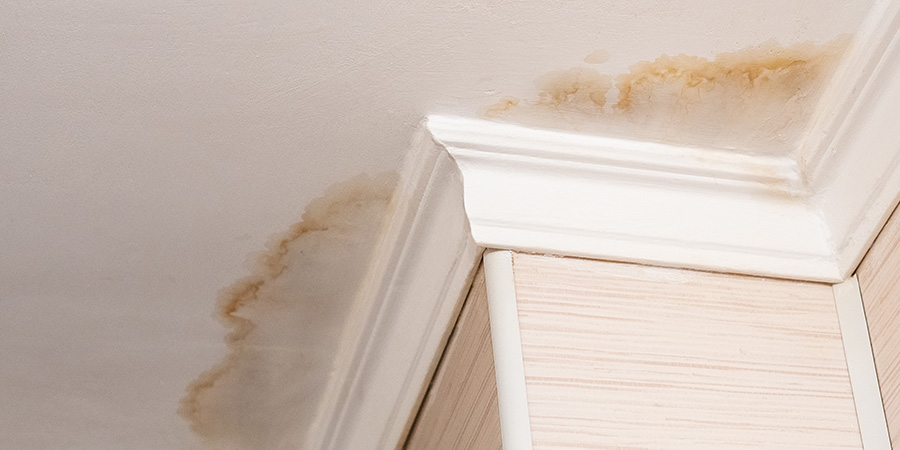
Standing water is a big problem. It can seep beneath shingles, reaching vulnerable areas like the fascia and decking. Over time, this can cause rot and weaken the structure of your roof. And where there’s moisture, there’s often mold and mildew, which can ruin insulation and personal belongings.
Winter brings its own set of challenges. Ice dams form when water trapped in clogged gutters freezes, creating a barrier. As snow melts, the water has nowhere to go, so it can sneak under shingles and cause serious – and expensive – damage. Regular gutter maintenance can help you avoid these headaches.
Protecting Your Foundation and Landscaping
Gutters don’t just protect your roof; they’re also key to safeguarding your foundation and outdoor spaces. Without proper drainage, rainwater can erode the soil around your home, leading to foundation settling, cracks, or even basement flooding.
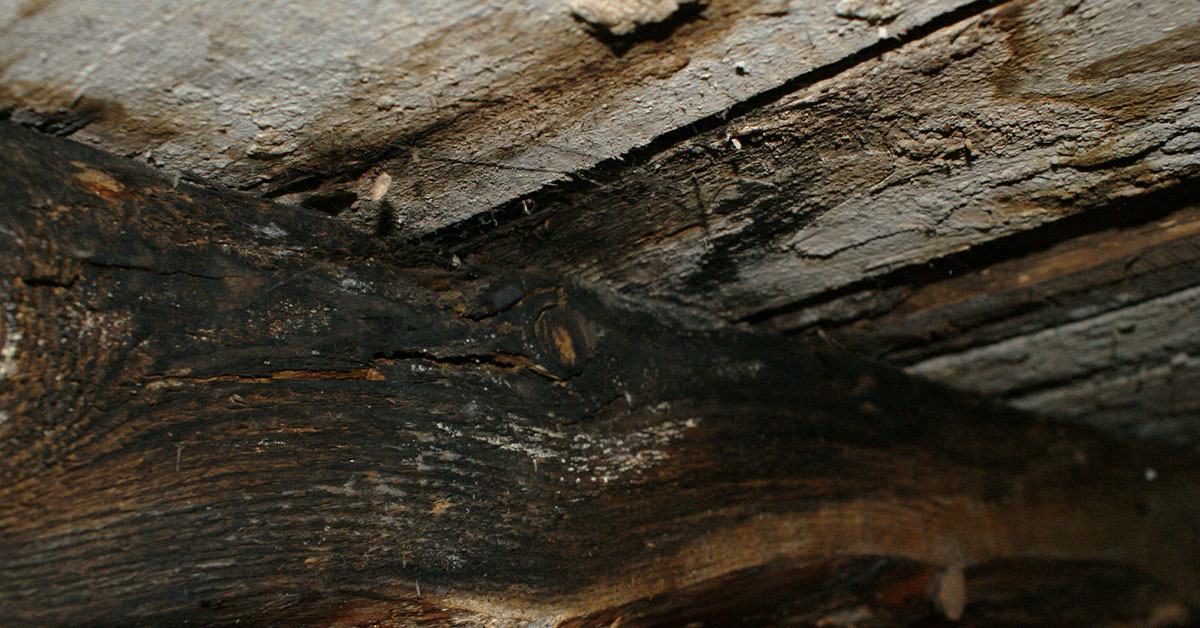
By directing water away from your home, gutters help prevent these costly structural problems. They also play a role in preserving your landscaping. Controlled water flow reduces soil erosion, keeping plants, mulch, and decorative features intact. Plus, it helps protect walkways and driveways from water damage that can cause cracks or uneven surfaces.
Overflowing gutters can wreak havoc on flower beds and delicate plants, flooding them with more water than they can handle. However, with well-placed downspouts, gutters can direct water to areas that need it most, ensuring your landscaping stays healthy while avoiding damage.
Common Problems from Poor Gutter Care
Ignoring your gutters can turn minor issues into major expenses. Catching problems early helps protect both your roof and your home.
Clogs, Overflow, and Ice Dams
Leaves, twigs, and other debris can clog gutters, blocking water flow. When this happens, water overflows, staining exterior walls and seeping into areas it shouldn’t. This excess moisture not only damages surfaces but also creates the perfect environment for mold and mildew to thrive.
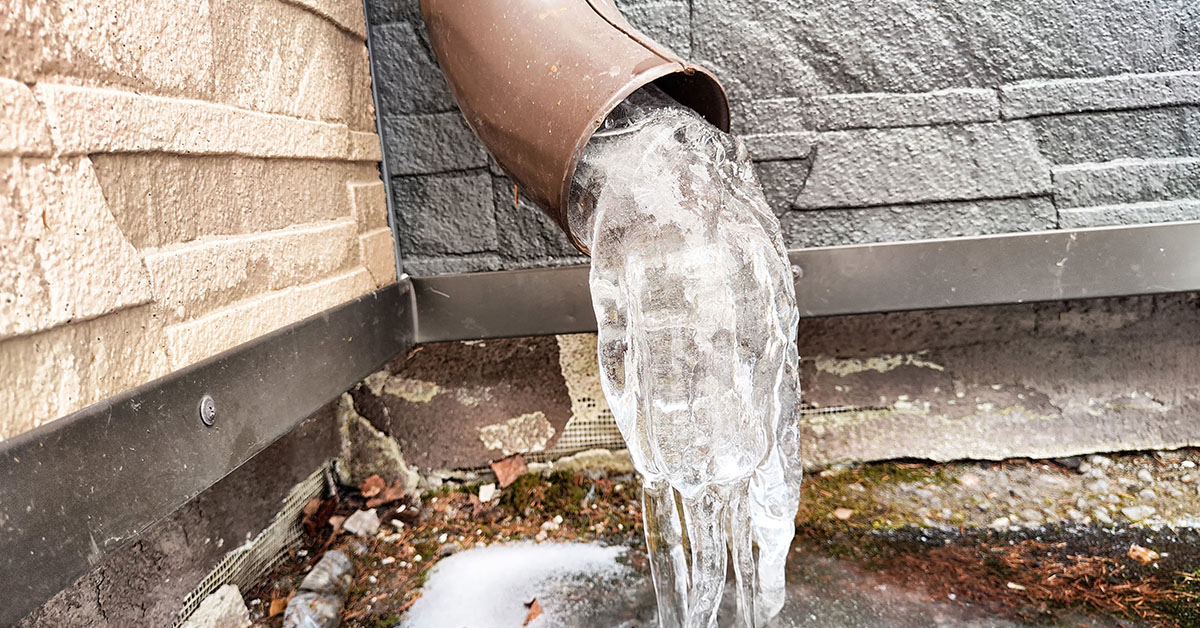
During colder months, trapped water can freeze and form ice dams. These blockages prevent proper drainage and force melting snow under shingles, leading to leaks. In areas where temperatures frequently hover around freezing, the constant freeze-thaw cycle can even cause gutters to crack or detach from your home.
Pest Problems and Sagging Gutters
Gutters filled with standing water and debris become magnets for pests. Insects, rodents, and birds are drawn to the stagnant water and clutter, worsening blockages and accelerating gutter wear and tear.
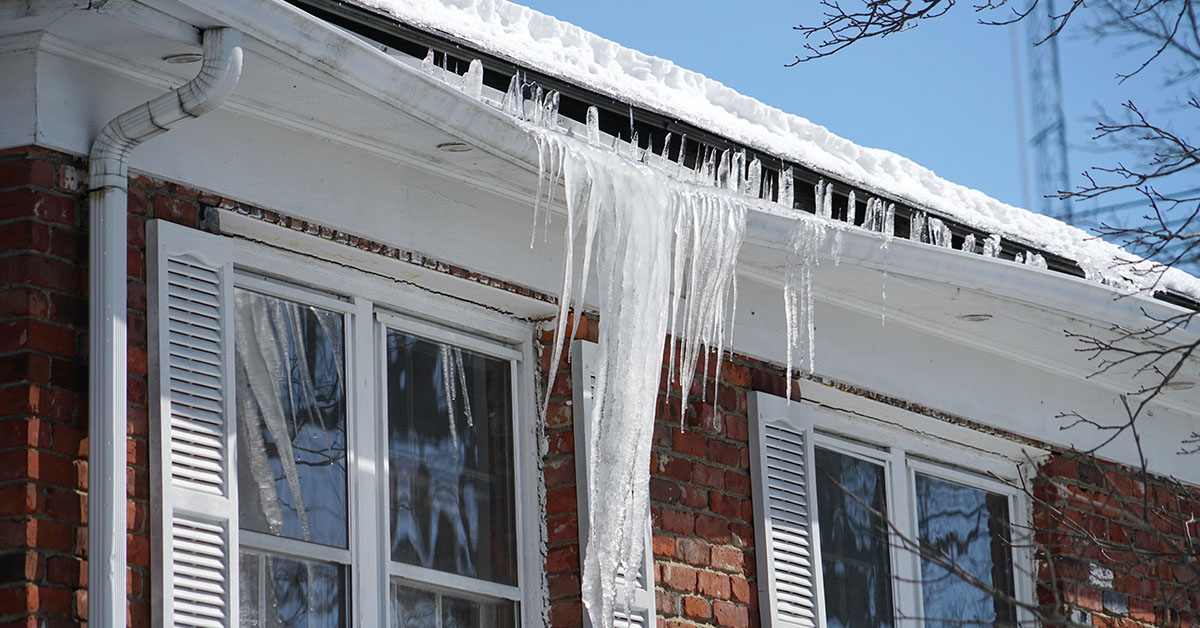
The added weight of water and debris can also cause gutters to sag or pull away from your home. Misaligned gutters fail to channel water properly, which can lead to structural problems if ignored. Regular cleaning can prevent these issues and keep your gutters functioning effectively.
Regular Maintenance vs. Neglect
Consistent gutter maintenance, like cleaning and inspections, is key to avoiding costly repairs. By keeping gutters clear and securely fastened, you protect your roof, siding, and foundation from water damage.
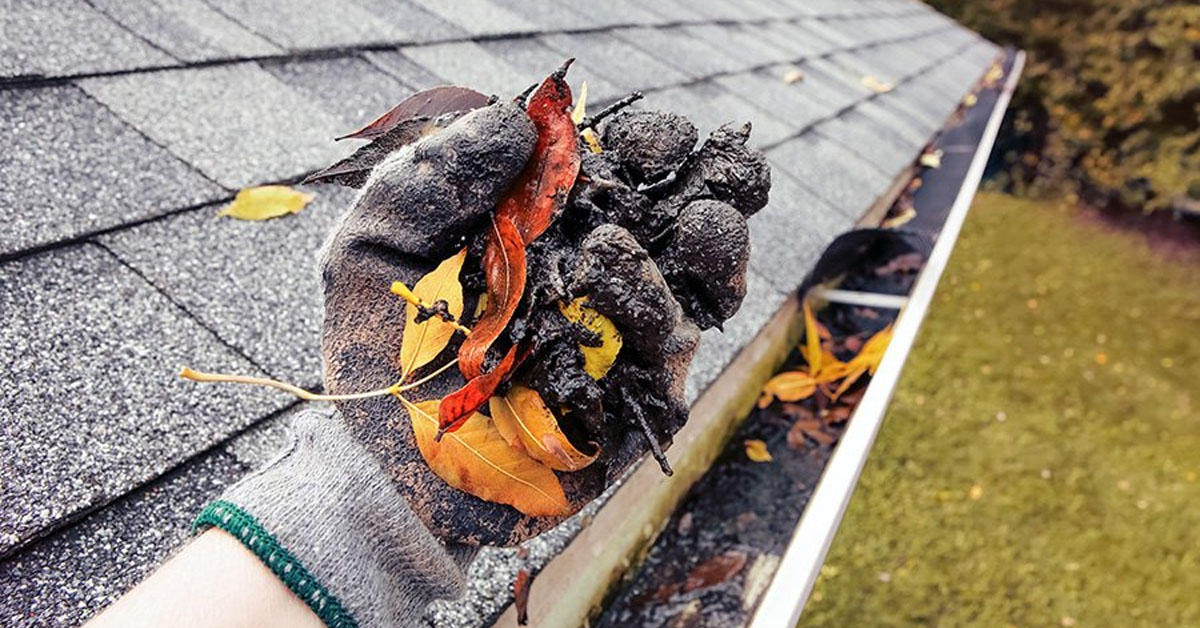
This routine care reduces the risk of ice dams, pest infestations, and sagging, ultimately saving you money and preserving your home’s integrity.
Step-by-Step Gutter Cleaning and Inspection Guide
Cleaning and inspecting your gutters is an essential part of home maintenance. Here’s a simple guide to help you tackle this task safely and efficiently.
Safety Gear and Tools You Need
Safety should always be your top priority when working at heights. Use a sturdy extension ladder that extends at least 3 feet above the roofline, and make sure it’s placed on level ground. Follow the 4-to-1 rule: for every 4 feet of ladder height, the base should be 1 foot away from the wall.

Equip yourself with work gloves, safety glasses, and non-slip shoes to reduce the risk of injury. Avoid cleaning gutters during wet or windy weather, as slippery surfaces can make the job dangerous.
You’ll also need a few basic tools: a plastic gutter scoop or small garden trowel, a bucket or tarp for collecting debris, a garden hose with a nozzle, a drop cloth, and a wire brush.
Cleaning and Flushing Debris
Once you’re geared up, start cleaning your gutters. Begin at the downspout end and work your way toward the opposite end. This method helps prevent debris from clogging the downspout. Remove larger debris by hand first, and then use your scoop or trowel to clear out the remaining sludge. Work in small sections to avoid overreaching, which can be unsafe.
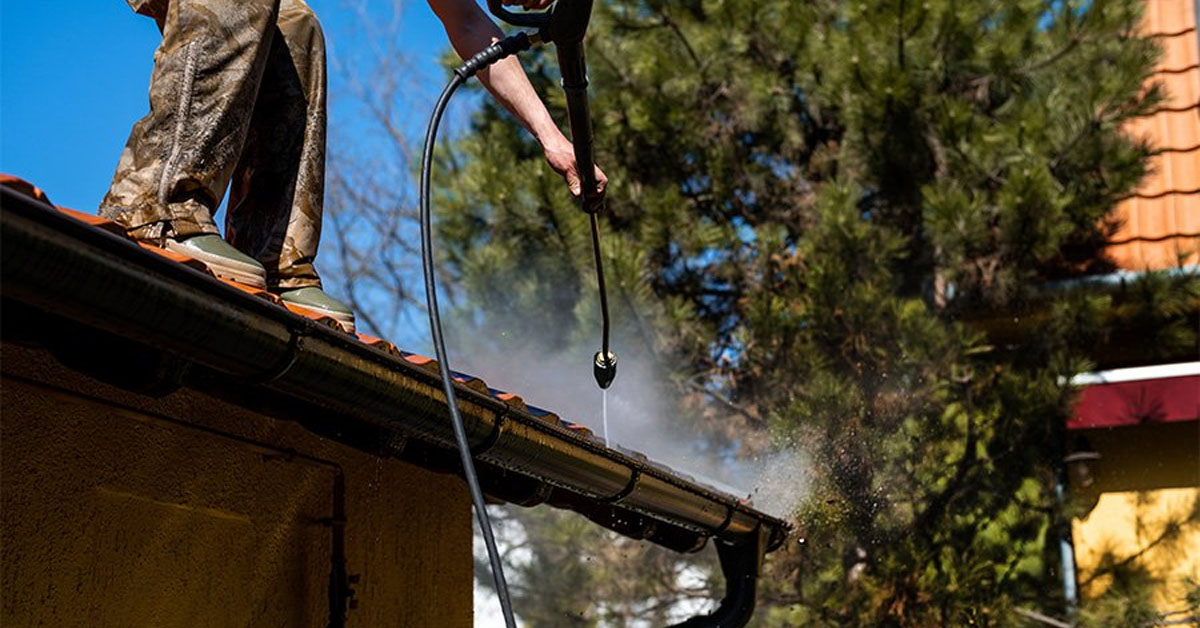
When all visible debris is removed, flush the gutters with a garden hose. Start at the farthest point from the downspout and work toward it, using moderate water pressure. This step not only clears out fine debris but also helps you spot any clogs or drainage issues.
Pay close attention to the downspouts. If water flows slowly or backs up, you likely have a clog. Use a plumber’s snake or a straightened coat hanger to clear the blockage, working from both the top and bottom of the downspout until water runs freely.
Inspection Tips for Damage and Repairs
After cleaning, take the time to inspect your gutters for damage. While cleaning, you may have noticed common signs of wear and tear, such as cracks, holes, or rust spots. Small holes can often be patched with roofing cement or gutter sealant, but larger issues may require professional help.
Check the slope of your gutters to ensure proper drainage. Water should flow smoothly toward the downspouts. If you notice standing water, it could mean the gutters are sagging or improperly pitched, which can lead to overflow during heavy rain.
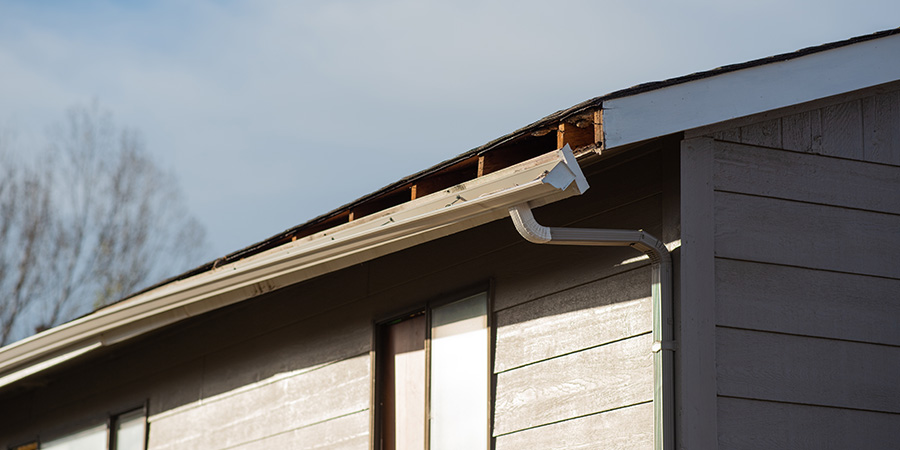
Inspect the mounting brackets and hangers to make sure they’re secure. Gutters should sit tightly against the fascia board with no gaps. Loose gutters can detach during storms, causing potential damage to your home.
Lastly, examine the fascia board behind the gutters for signs of water damage, such as rot or discoloration. Soft wood or peeling paint can indicate moisture problems that need immediate attention. Also, look for stains or peeling paint on the walls below the gutters, as these often signal leaks or overflow issues.
If you encounter severe damage, multiple problem areas, or structural issues, it’s best to call a professional. Attempting complex repairs without the right experience can worsen the situation and pose safety risks. Regular inspection and timely repairs can help protect your home and save you money in the long run.
sbb-itb-66ccccd
Tools and Methods for Long-Term Gutter Care
Beyond routine cleaning and inspections, certain tools and strategies can make gutter maintenance less frequent and more effective. With the right approach, you can ensure your gutters stay functional while reducing the need for constant upkeep.
Here’s how you can protect your roof and minimize ongoing maintenance efforts.
Gutter Guards: Types and Benefits
Gutter guards are an excellent way to limit debris buildup, making your gutters easier to maintain. They can help you save time and money by reducing how often you need to clean.
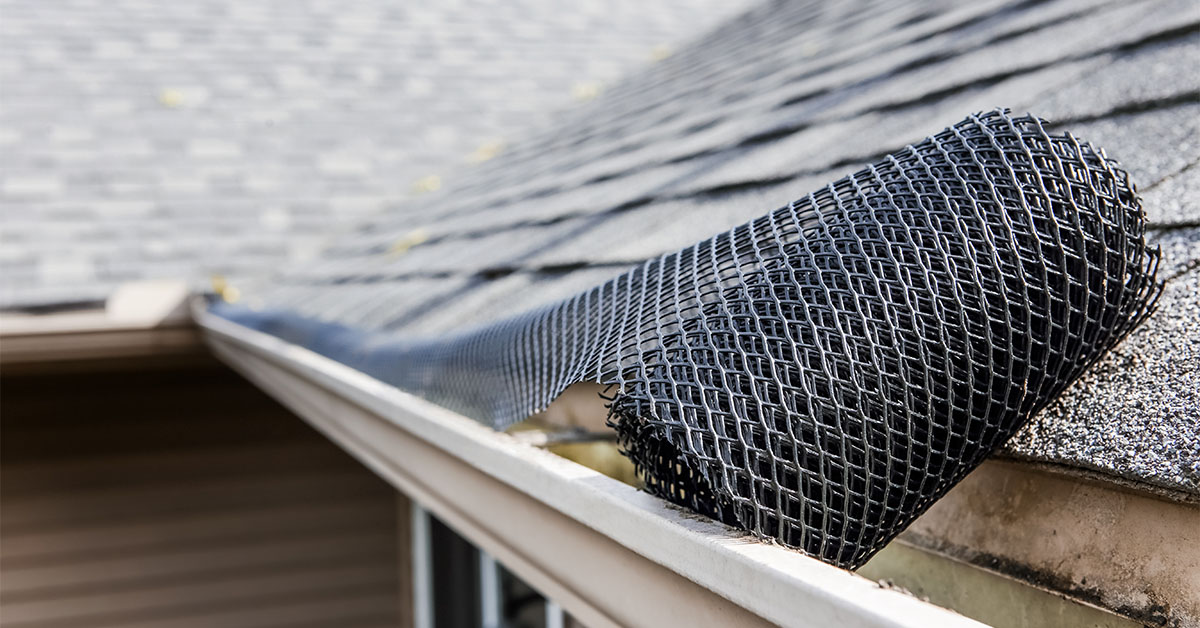
- Micro-Mesh Guards: These are made with a fine mesh that allows water to flow freely while blocking leaves, pine needles, and smaller debris. They’re durable and highly effective, though they come with a higher upfront cost.
- Foam Inserts: A more affordable option, foam inserts fit snugly into gutters. They let water pass through while catching larger debris. While cost-effective, they work best in areas with moderate leaf fall and need to be replaced more often.
- Brush Guards: These resemble oversized bottle brushes placed inside the gutter. They effectively trap larger debris, like leaves and twigs, but smaller particles may still slip through. Regularly cleaning the bristles ensures they perform well.
Each type of guard has its strengths, so choosing one depends on your budget and the specific needs of your home.
Seasonal Maintenance Tips
Seasonal care plays a crucial role in keeping your gutters in top shape. Here’s how to adapt your maintenance routine throughout the year:
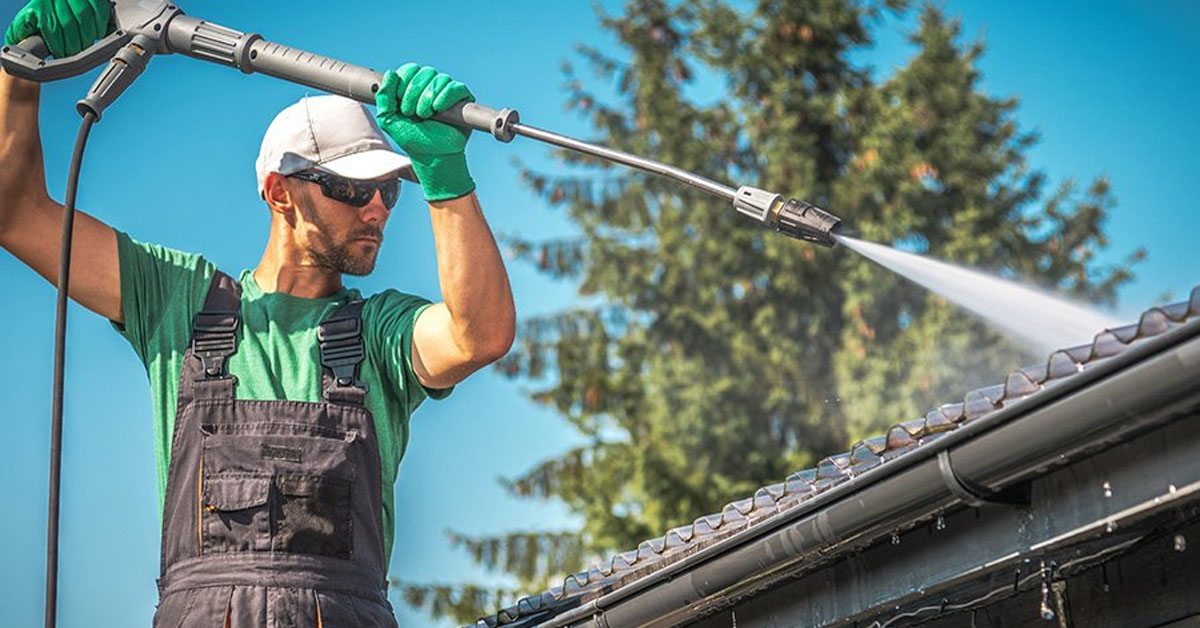
- Spring: Take stock of any damage from winter storms. Tighten loose brackets, repair damaged sections, and clear leftover debris. Use a garden hose to test downspouts and ensure water flows as it should.
- Fall: This is the peak season for gutter cleaning, especially if your home is surrounded by trees. Focus on clearing leaves and other debris to prevent blockages.
- Winter: In colder regions, watch for ice dams and snow buildup. Use a roof rake to remove excess snow, but avoid using salt or ice melt, as they can corrode metal gutters. Proper attic insulation and ventilation can help prevent ice from forming in the first place.
- After Storms: High winds and heavy rain can cause damage or clog gutters. A quick visual inspection from the ground can help you spot issues early, saving you from bigger problems down the road.
To stay organized, keep a log of your cleaning schedule, any repairs, and recurring issues. This record will help you track problem areas and plan for future maintenance more effectively.
Pro-Tech Roofing‘s Gutter and Roof Maintenance Services
Taking care of your gutters might seem like a simple DIY task, but there are times when calling in the pros is the smarter move. Pro-Tech Roofing, with years of experience in Tulsa, specializes in gutter maintenance that not only keeps your gutters in great shape but also safeguards your roof.
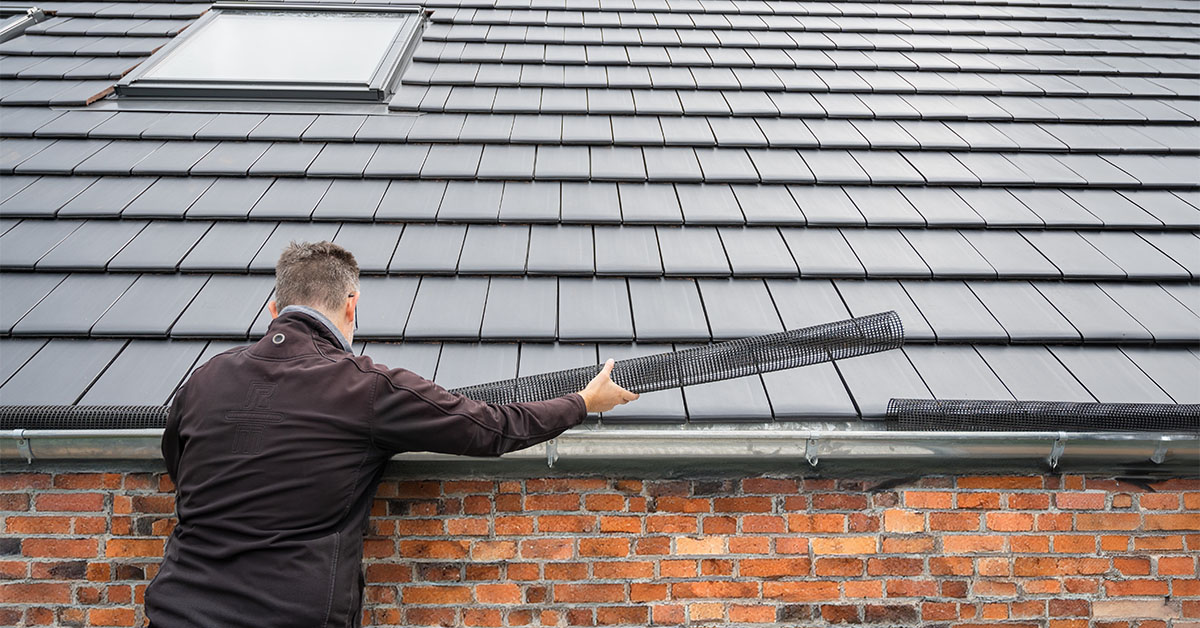
Professional help is especially important for homes with multiple stories, steep roofs, or intricate gutter systems. These setups can be tricky to manage without the right skills and tools. Pro-Tech Roofing’s team knows how gutters and roofs work together, spotting potential problems that might slip past during a routine cleaning.
Thorough Gutter and Roof Inspections
While regular DIY cleaning can handle surface-level issues, professional inspections dig deeper to catch hidden problems early. Pro-Tech Roofing offers free roof inspections that go beyond a quick glance. Their certified technicians focus on how your gutters and roof interact, looking for issues like poor drainage, damaged flashing, or spots where water might seep in.
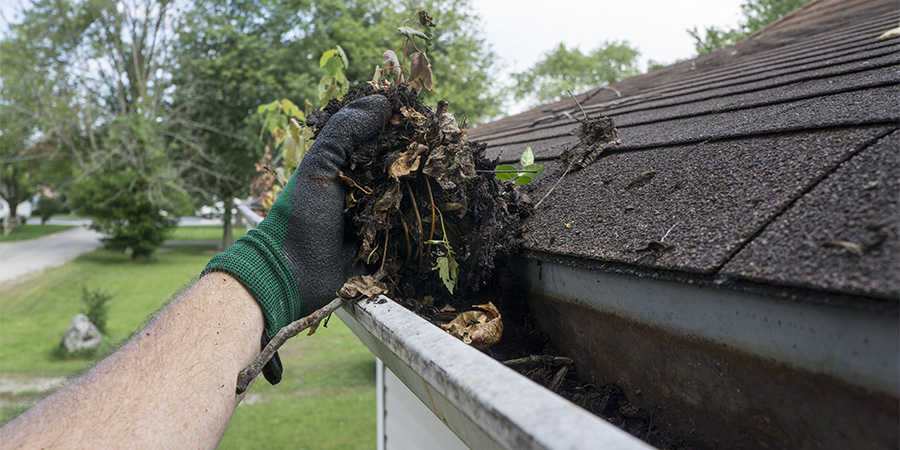
During these detailed inspections, they check gutter alignment, test how well downspouts are flowing, and examine fascia boards and soffits for wear and tear. They also inspect roof edges for water damage, a telltale sign of gutter trouble. To keep you informed, they document everything with photos and provide a detailed report that can be handy for insurance claims or planning repairs.
Licensed and Insured for Peace of Mind
Pro-Tech Roofing is fully licensed and insured, ensuring all work meets local building codes and protecting you from liability. Their certifications from GAF and Owens Corning highlight their dedication to staying updated with the latest industry practices.

For commercial properties, they bring expertise in handling large-scale gutter systems and flat roof drainage. They work closely with property managers to provide reliable, scheduled maintenance that keeps things running smoothly without interrupting daily operations.
Preventative Maintenance That Saves Money
Pro-Tech Roofing’s preventative maintenance programs are designed to keep small problems from turning into expensive repairs. Regular gutter cleaning, minor fixes, and seasonal maintenance tailored to Tulsa’s weather help extend the life of your roof and gutters.
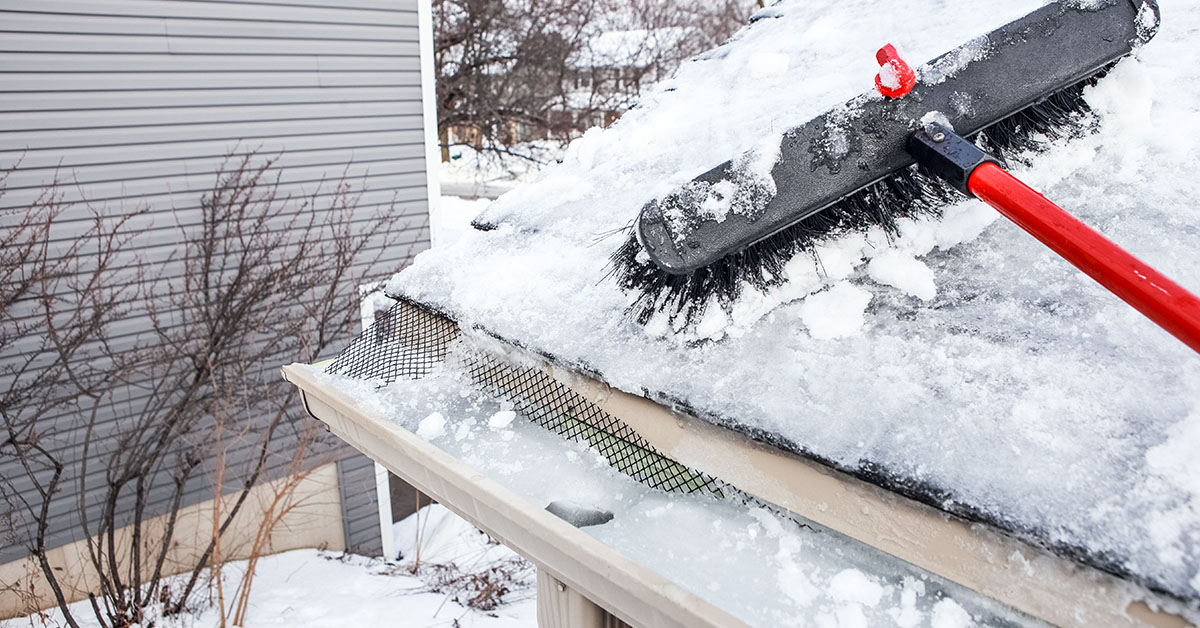
Even a small leak can lead to costly roof deck damage if left unchecked. By choosing a proactive approach, homeowners can avoid these headaches with routine monitoring and timely repairs.
Their services also include installing durable gutter guards built to handle Tulsa’s weather conditions. For those managing multiple properties or simply wanting a hassle-free solution, they offer scheduled maintenance programs with perks like priority storm assessments and discounted rates.
Conclusion: Protect Your Roof with Proper Gutter Care
Gutters play a crucial role in safeguarding your roof, foundation, and landscaping. When functioning correctly, they direct water away from these critical areas, preventing damage year after year. But when gutters fail, the resulting damage can be both rapid and expensive.
Maintaining your gutters regularly is a smart way to avoid water damage, roof leaks, and foundation problems. This simple yet effective approach can save you from hefty repair bills down the line. Whether you tackle the upkeep yourself or hire professionals, staying proactive makes all the difference.
DIY gutter cleaning can be effective for routine maintenance, but professional inspections are invaluable for spotting hidden issues. Experts, like the licensed contractors at Pro-Tech Roofing, have the tools and expertise to safely manage repairs and address problems that might go unnoticed during standard cleanings.
Taking care of your gutters is an investment in your home. A well-maintained gutter system protects your property from water damage, helps preserve its value, and ensures your roof stays in good shape. Whether you prefer to handle the basics yourself or call in the pros, consistency is key. Addressing minor issues before they grow into major problems will save you time, money, and stress.
FAQs
How can I tell if my gutters are clogged or damaged?
If your gutters are clogged or damaged, there are usually some clear warning signs. Watch for water spilling over the edges, sagging or detached sections, or even plants taking root in the gutters. Other clues include dark streaks or water stains on your siding and pooling water near your home’s foundation. An uptick in pests around your roofline can also signal a problem.
Not sure when you last cleaned your gutters? That’s often a sign it’s time to take a look. Staying on top of regular maintenance can help catch these issues early, saving you from expensive repairs later.
How often should I clean my gutters, and does this depend on the season or weather conditions?
You should clean your gutters at least twice a year, typically in late spring and late fall. That said, how often you need to clean them can depend on a few factors, like how many trees are near your home, your local weather patterns, and whether you’ve installed gutter guards. For instance, if your home is surrounded by trees or you deal with a lot of seasonal debris, you might need to clean them three to four times a year.
Sticking to a regular cleaning schedule helps prevent problems like water damage, roof leaks, and even foundation issues. To keep everything in good shape, it’s a good idea to plan for seasonal cleanings and inspections, especially after heavy storms, to make sure your gutters are doing their job.
What are the advantages of using gutter guards, and how can I pick the best option for my home?
Gutter guards offer a range of practical benefits, like cutting down on the need for constant gutter cleaning and stopping clogs caused by leaves, twigs, or even shingle grit. By keeping your gutters clear, these guards help shield your home from water damage while also prolonging the life of your gutter system.
When choosing gutter guards, take into account the types of trees near your home – some shed more debris than others. It’s also smart to factor in your local weather patterns and how your gutters are designed to make sure the guards will work effectively. Picking the right gutter guards can save you time, lower maintenance costs, and help protect your roof and home throughout the year.
